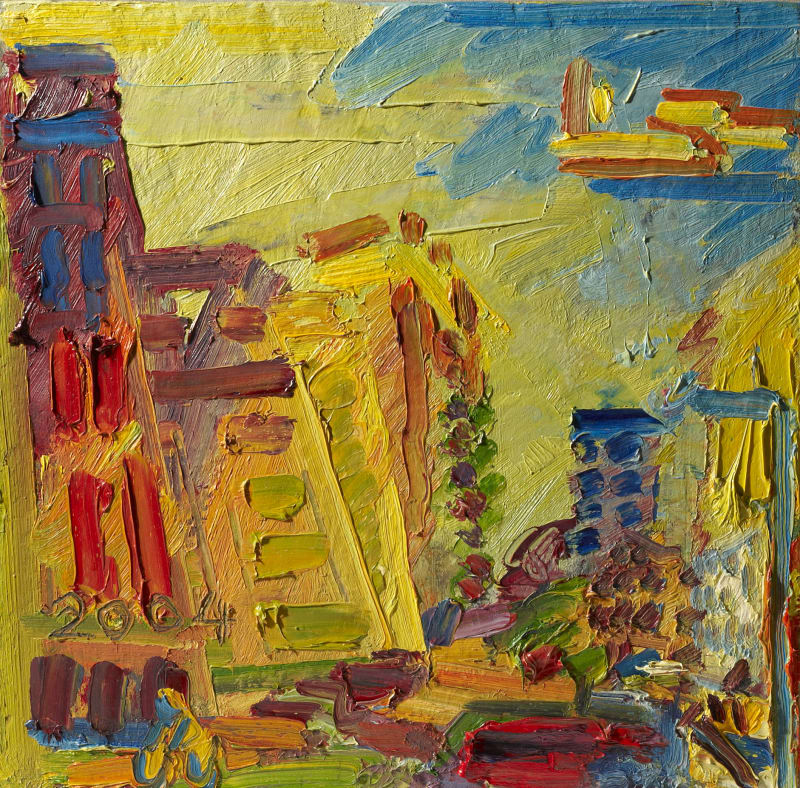Painter Frank Auerbach was born to Jewish parents in Berlin, Germany on 29 April 1931 and, following the rise of Nazism, was sent to England in 1939 via a private scheme set up by the British-born writer Iris Origo; his parents, who remained behind, subsequently perished in concentration camps. Auerbach spent his childhood at Bunce Court, an independent, private boarding school, relocated following Hitler's accession to power in 1933 by its founder Anna Essinger from south Germany to the village of Otterden, in Kent, and providing a haven for its mostly Jewish refugee pupils. He attended St Martin’s School of Art (1948–52) and studied at David Bomberg’s evening classes at Borough Polytechnic together with Leon Kossoff, as well as at the Royal College of Art (1952–55).
In 1956 Auerbach participated in a group show at Ben Uri Gallery, and in the same year was given his first solo exhibition by dealer Helen Lessore at the Beaux-Arts Gallery, where he exhibited regularly until 1963. The artist was for many years represented by the Marlborough Galleries in London, and then by Marlborough's former Director Geoffrey Parton. In 1976 Auerbach was one of a loose group of figurative painters selected by R. B. Kitaj for the exhibition 'The Human Clay', giving rise to the controversial label 'The School of London', although he stated that he did not feel part of this or any group.
Auerbach occupied the same studio in Mornington Crescent (formerly occupied by Kossoff, and before him Gustav Metzger) in Camden for almost 70 years and the surrounding area was a frequent subject in his painting, executed in a characteristic vigorous impasto, for which he mades often hundreds of preliminary drawings. He focused on a close circle of family and friends as sitters including E. O. W. (Estella Olive West), Juliet Yardley Mills, his wife Julia (née Wolstenholme) and art historian and curator Catherine Lampert. Auerbach had retrospectives at the Hayward Gallery (1978) and Tate Britain (2015) and numerous solo exhibitions including at the British Pavilion in the 1986 Venice Biennale and the Rijksmuseum, Amsterdam (1989).
Frank Auerbach died in London, England on 11 November 2024. His work is included in numerous collections throughout the UK including Abbot Hall, the Arts Council, the Ben Uri Collection, the British Council, Pallant House Gallery, the National Gallery, the National Galleries of Scotland, the Royal College of Art, and Tate, as well as many international collections.


